Stoner 63. Shutter box. Baptism of Fire in Vietnam
This is a continuation of the article about the Stoner 63 complex. The first part is published here, second part - here.
The basis, or a single base for the modular design of the new Stoner weapon system, is a stamped slide box. These or those modules and barrels were attached to it, and as a result received a carbine, rifle or various machine gun configurations.
Shutter box
It is worth noting that the photo shown at the beginning of the material shows a later model of the slide box. On it holes in the area of the trunk of a smaller diameter. On the boxes of early models there were only 8 holes of larger diameter.
There are 6 attachment points on the bolt box: 3 at the top and 3 at the bottom. Interchangeable modules and assemblies are attached to them using pins. For example, a pistol grip, butt, or other module.
A gas tube is also attached to the shutter box, which is fixed. Depending on the position of the gas tube (top or bottom), one or another configuration can be assembled weapons. So, to assemble a carbine or assault rifle, the bolt box should be deployed to the “gas pipe from above” position. And mount a rifle barrel under it. And to assemble the machine gun, the bolt box must be turned to the "gas pipe from below" position. And mount a heavy machine gun barrel over it.
The bolt assembly (bolt assembly) is universal, and is used in all versions. The pistol grip with a trigger has been used in all versions, with the exception of the “tank/aviation"Machine gun (Fixed Machine Gun). Together with the bolt box, they made up the Basic Component Group.
In order to assemble, for example, an assault rifle, the following parts were needed:
- rifle barrel (Rifle Barrel Assembly);
- forend (Forestock Assembly);
- module with a rifle scope (Rear Sight Assembly);
- butt (Butt Stock);
- adapter for the store (Magazine Adapter);
- a detachable magazine for 30 rounds.
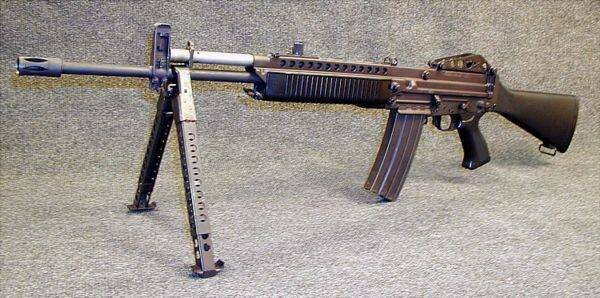
In order to assemble a machine gun with store-fed (LMG), required a few other details. Pay attention to the kit, which is shown in the photo below.
Curious fact.
A box magazine with 30 rounds of ammunition for the latest 5.56 × 45mm rounds was developed specifically for the Stoner 63 system. In official documents of those years he was referred to as the “STONER 30-round detachable magazine”. Due to its capacity, this magazine was more successful than the 20-cartridge magazine, which was initially equipped with the first serial M16 rifles. And when in February 1967 the improved M16A1 rifles began to enter the troops, they were already equipped with 30 rounds stores from the Stoner system. Over time, due to the widespread use of the M16 family of rifles, the 30-round magazines from the Stoner system became known as the “Standard M16 Rifle Stores”
Thus, 30 round magazines and M27 cartridge strips designed for the Stoner 63 system have been used by the military (and not only) almost half the globe for half a century.
The lineup
In total, 6 types of interchangeable shafts and modules were developed, which were enough to assemble 6 configurations. The following types of small arms were received at the exit:
- carbine;
- assault rifle;
- machine gun with store food (for convenience - Bren);
- light machine gun with tape power (Light Machine Gun Belt-Fed);
- easel machine gun with tape power (Medium Machine Gun);
- aircraft machine gun (Fixed Machine Gun).
As you can see, the weapons of the Stoner 63 system of the first series were equipped with wooden fittings. But over time, the forend and butt began to be made of polycarbonate. Butts were made easily removable and disconnected with one click. If necessary, you could use the butt from a different configuration or not use it at all. For example, if circumstances forced or it was convenient.
Original design shutter
Another feature of the Stoner system is the barrel locking assembly, namely the bolt group of a special design. Like the shutter box, the shutter also has the ability to work in 2 positions. That is, the shutter can also be called a “shifter”. In one position it works in the “Free shutter” mode, and in the second (inverted position) it works in the “Rotary shutter” mode. That is, the barrel is locked by turning the shutter. In our time, such a node would be called a hybrid.
For the change of modes, a triangular protrusion on the shutter called “Shark Fin” and a cutout from its back are responsible. So, in the "Rotary shutter" mode during movement, the fin interacts with the details of the trigger and helps to lock the barrel. And in the inverted position, the fin does not participate in the operation of automation. But the cutout is involved, which fixes the shutter in the rear position, and the automation operates in the "Free shutter" mode.
Of course, in one mode or another, not only the fin or roller from the back of the bolt group is involved. The work involves a disconnector, grooves and guides, as well as other figures both on the bolt group and in the trigger. Thanks to them, the details of automation move “in the right direction”, and we get one or another mode.
The operation of automation is shown in detail in the video at the end of the article.
In the "carbine" * and "assault rifle" variants, the barrel is locked by turning the bolt, as on the AR-15 / M16 (closed bolt). Thus, a high accuracy of fire is achieved. And in the variants “machine gun” (Light Machine Gun), “medium” (Medium Machine Gun) and “tank / aircraft” machine gun (Fixed Machine Gun) - firing is conducted with an open shutter (open bolt). The manufacturer’s prospectus indicates that an open shutter promotes continuous fire and also increases its sustainability (greater sustained fire).
* A curious detail.
Thanks to the unified USM in the “carbine” version, it is possible to fire both single shots and bursts. By and large, the rifle from the assault rifle had a shorter barrel and the presence of a folding butt. The folding butt could be either wood / polymer or wire.
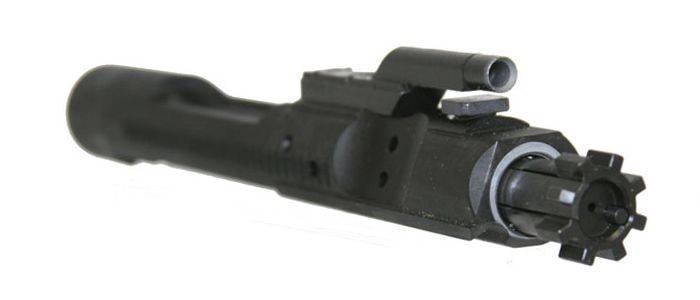
Ian McCollum of Forgotten Weapons believes the Stoner 63 is in many ways a natural evolution of the AR-15, with emphasis on modularity. The author of this article believes that in Stoner 63 were used, including solutions that were used on the AR-18 ("Widower").
The military showed great interest in the new complex, but they demanded to conduct tests in real combat conditions. Since the war was in full swing, Vietnam did not have to choose a region for a long time. For a number of reasons, not 6-in-1 self-assembly kits were sent to Vietnam, but several modifications assembled at the factory. An already updated system with the designation Stoner 63A was sent to war.
Stoner: early days in battle
This is the name of the story, which was published by J. Gibbs, a retired lieutenant colonel in the United States Marine Corps in the Small Arms Review. I cannot vouch for the absolute accuracy of the translation, but I hope that the meaning of the story has not been distorted. Next is the narrative on behalf of Lieutenant Colonel Gibbs.
* * *
In the winter of 1967, the Lima Company / Company L company of the 3rd Battalion of the 1st Marine Regiment of the 1st Marine Division participated in battles against the Viet Cong units, south of the city of Da Nang. At that time there was an air base that was used by the South Vietnamese and American Air Force.
The main objectives of the company "Lima" were to survive and destroy the enemy. However, at the end of February, the fighters were given another task: to test the Stoner 63A experimental system in real combat conditions. As a result of the tests, the command planned to decide on the suitability of this weapon complex for the US armed forces.
At that time, the fighters were armed with reliable M14 rifles, M60 machine guns and M1911A1 pistols. We were a combat unit that participated in battles in the tropics. Despite the increased humidity, dirt, sand and other factors - our weapons continued to work flawlessly. Therefore, these models have become our "gold standard" when compared with new weapons.
The Marines exchanged their pistols for .45 ACP cartridges, as well as 7,62 mm rifles and machine guns for new, previously untested carbines, rifles and machine guns for the new 5,56 cartridge. We expected that the cartridges in the chamber of our new weapons will continue to always respond to strikes.
The fighters unquestioningly began to study products and training firing. In a word, they were again preparing for a counter-guerrilla war, but with the weapons of the Stoner system. No one suspected that the Stoners and the new type of ammunition of a smaller caliber would work differently than the samples of reliable weapons with which we were armed before. I know these facts, because at that time I commanded a company.
We had to test the weapons of the Stoner system in 5 versions: a carbine, an assault rifle, two types of light machine guns (with magazine and tape power), as well as easel machine guns. Officers and non-commissioned officers (sergeant-petty officers) received carbines. The rifles were handed to most of the Marines, who had previously been armed with M14 rifles. The exception was the marines, who were given light machine guns with store food. In total, about 180 soldiers and officers received new types of weapons. 60 days were allowed for testing in combat conditions.
Thus, the Marines were to conduct a 60-day “trial” over five members of the Stoner family.
We needed to quickly learn the features of the new weapon: disassembly, assembly, maintenance and use. Then we needed to “feel” the capabilities of this weapon, gain confidence in its reliability.
The weapons of the Stoner system immediately impressed us. All samples were radically different both in their appearance and in their device from everything we have ever seen. It looked solid, and inspired confidence.
At first, attention was drawn to the lack of wooden fittings. Then - perforated metal, the presence of plastic and a pistol grip. The weapon was light and balanced. We had the feeling that it was delivered to us from the future.
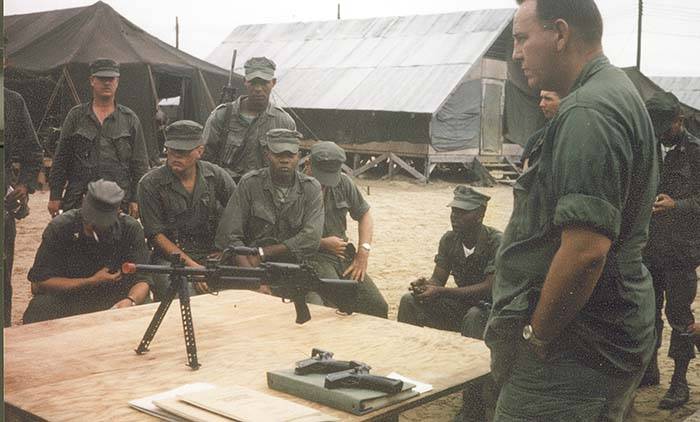
A group of instructors was delivered from the U.S. Navy base at Quantico, Virginia. They conducted an 18-hour training course with the fighters in the harsh conditions of the base, and after that the unit commanders conducted 6 hours of additional training with their subordinates. All this time, every marine fired from his type of weapon. The number of emitted cartridges was calculated based on the type of weapon and the time required to obtain shooting skills from one or another model.
We got a sufficient, but still limited supply of new at that time 5,56 mm ammunition. Therefore, for training firing, 250 rounds were allocated for each rifle, 270 rounds for the rifle, and 1000 rounds for machine guns. Our training was satisfactory. We were mentally and physically prepared to engage in battle with our Stoners. On February 28, 1967, the fighters of the Lima company, now armed with the Stoner 63A, left the location of the battalion, and again proceeded to combat patrol.
The enemy quickly began to recognize us because of the specific sound made by our new weapons. For many miles around, we were the only combat unit that used 5.56 mm ammunition.
Shops that saved a fighter’s life
March 3, soldiers of the 2nd detachment of the 2nd platoon, under the command of Corporal Bill Pio (Bill Pio) went on a day patrol. The duties of the radio operator were performed by Junior Corporal Dave Mains. Suddenly, Junior Corporal Kevin Diamond (Kevin Diamond) found a few Vietnamese under the tree, at 12 o’clock. The detachment stopped, and Pio and Maines crawled cautiously to Diamond's position. Corporal Pio ordered the enemy to be surrounded, but as soon as the soldiers began to carry out the order, the Vietnamese noticed them and opened fire on the marines. Both Pio and Diamond were seriously injured. After their evacuation, someone noticed that the pouch of the radio operator Maines was cleared up. It turned out that in one of his flasks and in 2 stores, enemy bullets were hit. Steel shops, equipped with cartridges and a flask filled with water, performed the role of body armor. He saved these items as a talisman, and after the end of the service he drove the shops riddled with bullets and a flask home to the United States.
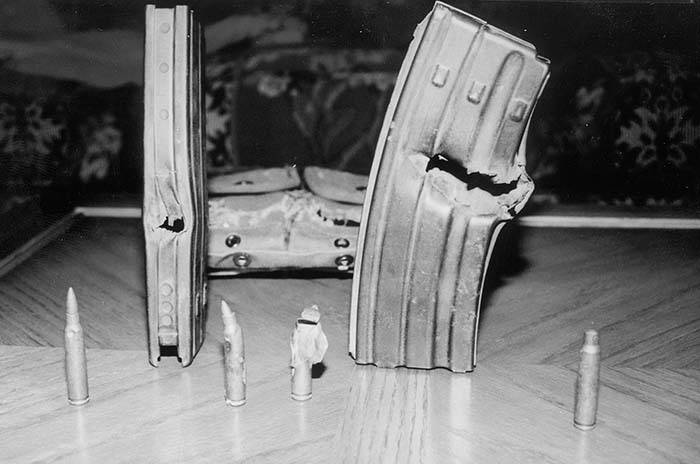
Wismeyer Belt
During the testing of new weapons, we had the opportunity not only to compile a list of comments on the tested samples, but also to offer all sorts of upgrades. A useful improvement was suggested by the commander of the 2nd platoon, Lieutenant William Wischmeyer.
Prior to the test, officers and sergeants were armed with self-defense pistols. One of the main reasons for arming commanders with short barrels is not to let them get too fond of shooting, and to give them the opportunity to concentrate on controlling the fighters. After all, officers and junior commanders often read maps, control artillery fire, and conduct negotiations on radio communications. That is, their hands are often busy. And at the time of testing, the officers were armed with carbines. How to be
Junior Lieutenant Wismeyer quickly realized the problem, and proceeded to solve it. He took several straps from the unloading vest, a belt from the blanket (roll), as well as a standard belt from a carbine and connected them all in a special way. The result is a homemade tactical belt. Senior Lieutenant Grand Mulder (Gran Moulder) called him “Wischmeyer belt” (Wischmeyer sling). However, the jokes did not last long, since the belt was quickly appreciated. Over time, it became widespread and became known as the “jungle sling”.
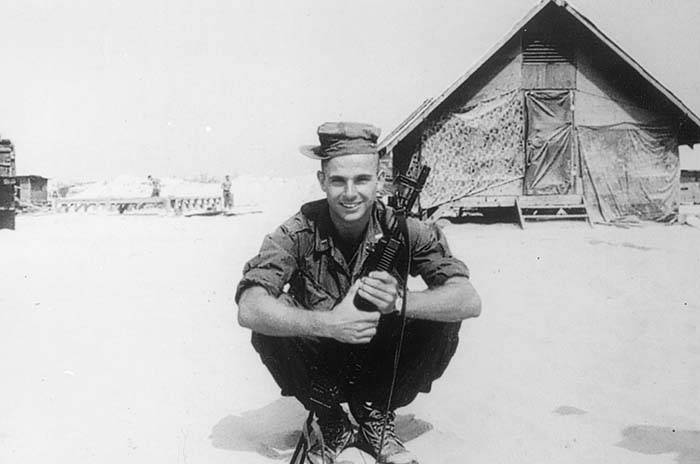
In the jungle, Wismeyer’s belt allowed the commanders to keep their hands free and, if necessary, shoot single shots or even bursts. The stoner system’s carbines were perfectly balanced, and I also equipped my weapon with a jungle belt. Thanks to the ability to adjust the length of the belt, my carabiner was located at the level of the belt and provided freedom of hands. For shooting, I quickly lowered my right hand to the handle, pushed the weapon forward, and grabbed the forearm with my left hand. Bullets flew right at the target, as if they were flying out of my finger. That was great! The belt was a vital necessity.
We continued to use the "jungle belt" even after Lieutenant Wismeyer (author of the rationalization proposal) was wounded on March 8 and was evacuated. Moreover: we used a tactical belt throughout the entire time we were testing new weapons. So the 9-day contribution of Lieutenant Wismeyer to the modernization of the carbine of the Stoner system was significant.
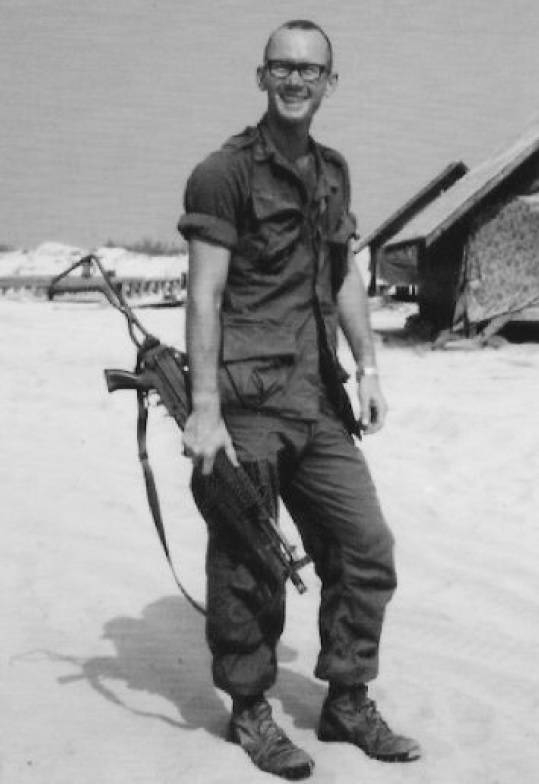
Fault Reporting
After 12 days of patrolling, we returned to the location of the battalion. Having rested and replenished our reserves, we were preparing for the next exit. Upon arrival at the base, we were required to fill out 4 reports, among which was the “Fault Report”. I did not expect it to be filled too often. But it turned out differently.
Marines reported 33 malfunctions that were detected during the first 12 days of using the Stoner system weapons in all 5 modifications. The most common were malfunctions when feeding cartridges and ejecting spent cartridges (poking). The ammunition itself was also criticized. The capsules were pierced, but no shots occurred. I did not know the causes of the malfunctions, but I realized that my fighters could not fight. Despite our malfunction reports, command attitudes toward Stoner products continued to be supportive. Soon we again went on patrol.
March 15, the commander of the 1st platoon, Lieutenant Andres Vaart (Andres Vaart) sent at sunset a group (4 soldiers) to perform a combat mission. The fighters were armed with two rifles and two light machine guns (LMG) with store-fed Stoner system, as well as one M79 grenade launcher (single-shot, 40 mm). On the way, the detachment ran into an enemy patrol. A skirmish ensued. Of the 4 trunks of the Stoner system, only 1 rifle worked without failures, while the remaining 3 constantly had problems. With the help of one serviceable rifle, grenade launcher and hand grenades, the marines managed to fight off the well-armed detachment of the Viet Cong, for whom the weapon worked properly. At the same time, the camp of the patrol company was attacked. And during the repulsion of the attack on the camp, the weapons of the soldiers of the patrol company showed a large number of malfunctions.
The Marines of the Lima Company were clearly disappointed in weapons that could not be relied upon.
In this situation, instead of looking for the enemy, we were forced to concentrate on making our weapons work. That night I canceled the patrol, and collected all 3 platoons. Commanding Sergeant Bill McClain, with the help of several fighters, cleared a place for an impromptu shooting range. Alternating, we fired all night, checking each "trunk", and fixing malfunctions. And if necessary (and whenever possible) we fixed the malfunction. However, all our attempts to solve the problem with the reliability of weapons in the field were in vain. The same faults that were detected in the first 12 days were again the most frequent. I had to admit that our weapons of a new type did not possess the most important property: reliability.
But that was our weapon, and we had to make it work. We needed to solve the problem ourselves. Moreover, we have already studied the system, and we knew much more about its defects than anyone else.
Empirically, we determined that the main causes of the malfunctions were: sand, grease, humidity, and the quality of the ammunition. Sand in those parts was inevitable, and we desperately needed high-quality cartridges. The task that we had to solve was to determine: how exactly sand, moisture and lubrication affect the performance of the weapon, and how to fix it. For two days we remained at the base and methodically conducted tests.
The area of our deployment was located on a plain, on the shores of the South China Sea. The sand in that area was unusually shallow. The fact is that we often moved on landing machines (LVT), which with their caterpillars grind sand into fine, crumbly powder. During the ride, sand dust rose above the machines on which we moved and settled on everything, without exception. We instantly found ourselves completely covered with white dust, which penetrated into each season. She also penetrated all the cracks, including - and the cracks in our weapons. To protect against dust, we wrapped our weapons in our army towels (green).
Tight fit parts
Three weeks earlier (during the training course) we noticed that for all five modifications the moving parts are too tightly fitted to each other. We subjected this fact to a thorough study. It was decided: to shoot, shoot, and shoot again, so that the details are “rubbed”. Each soldier fired more than one hundred rounds of ammunition from his weapon under the scrutiny of platoon sergeants and squad leaders. Active support was provided by the commandant sergeant and first sergeant (foreman) George Bean (George Bean). All the malfunctions that were detected during the shooting were documented, then the fighter cleaned his weapon, went to the firing position, and continued the "shooting".
It was a long and painstaking but necessary process. Over time, we began to notice progress: weapons began to fail less often. However, troubleshooting weapons alone was not enough. It was necessary to instill confidence in each marine, to raise his morale.
We searched for a long time, and finally got a batch of better-quality ammunition. On March 18 and 19, the 5th platoon, led by Lieutenant Michael Kelly, conducted exercises, while evaluating progress in troubleshooting. But before, each fighter thoroughly cleaned and oiled his weapon (carbine, rifle or machine gun) in accordance with the features that he discovered as a result of fire tests.
Then the marines crawled along the sand to the firing position and each shot 100 rounds. After firing, the soldiers drove 3 miles in the sand on landing vehicles, returned covered with fine sand dust, landed, and again went to the firing line. There, each fighter shot another 100 rounds. And when another malfunction occurred, the marine was obliged to eliminate it himself, using only his own knowledge obtained during operation.
After receiving a new batch of ammunition, the shooting problems became much less. I was sure that we developed moving parts, and the fighters were convinced that their weapons could work properly. And if a malfunction occurs, each Marine, knowing the individual characteristics of his weapon, will quickly eliminate them. I believed in my fighters. That same night, we resumed combat patrols.
In the next 10 days, weapons of all configurations showed themselves much better. We patrolled, organized several successful ambushes, and as a result we captured two Viet Cong. In general, the fighters of the company "Lima" again began to fulfill their main task. But most importantly, the Marines' concerns about the reliability of the weapons of the Stoner 63 system have significantly decreased.
On April 3, I reported to the command that the weapon "works very well." In the report, I asked to extend the trial period from 60 to 90 days. My request was granted.
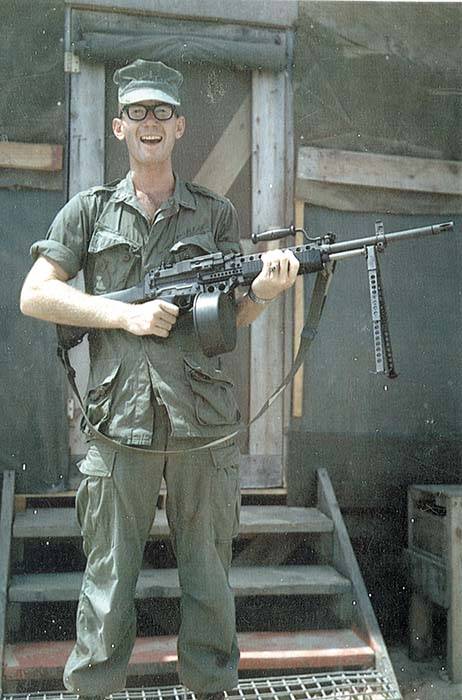
During the 90-day period, not only the weapons of the 63A family were tested, but also the marines themselves. In addition to our daily combat patrols, from February 28 to May 31, 1967, our company participated in 4 major military operations. In the first weeks, we rated the Stoners as a weapon of dubious reliability. But over time, we made him work, appreciated him, and became attached to him. It has become not just a test weapon, but OUR weapon. Henceforth, we no longer doubted its reliability.
By the end of the 1st month, we already knew that the problems that we encountered earlier were not due to the fault of the designer. During daily battles, the Marines of the Lima Company began to be respected, admired, and wished to go into battle precisely with the Stoner 63 in their hands. It concerned all its configurations.
At the end of May 1967, our company was re-equipped again. This time we were given M16A1 rifles, which already managed to earn a terrible reputation. Of course, all our experience gained while testing the Stoner 63A system was immediately applied to the unreliable M16. I believe that over time, Stoner became a worthy replacement for the M14, and the M16 failed to reach the Stoner level.
Respectfully -
Retired Lieutenant Colonel J. Gibbs, US Marine Corps.
* * *
Below are a few interesting comments from people who they claim to be familiar with the Stoner 63 system firsthand. Sorry for any inaccuracies in the free translation from English.
Jim ptk
July 13, 2012 at 6: 57 am
The gunsmiths conducted many interesting tests. Once they fixed the Stoner system in a vice to capture moments of shots. The barrel was parallel to the floor and was aimed at a thick armor plate. It was installed at such an angle that the bullet ricocheted down from it, where a bucket of sand (bullet trap) lay. When the shooting was completed, we found that each bullet after the rebound passed through the sand and pierced the bottom of the bucket. All bullets were recessed in the concrete floor under the bucket.
Dave berutich
September 10, 2016 at 11: 26 am
When we were ambushed, we could respond with a flurry of fire. The fact is that the Stoner was initially equipped with a 30 round magazine, while the M16 had only 20 magazine. The high-capacity store proved its effectiveness, especially when we needed to suppress enemy fire. Many of us made homemade sparks of stores (60 rounds), which allowed us to fire almost continuously. This is exactly what was needed when organizing the ambush.
I believe that the Stoner 63 was not adopted by the U.S. ILC more because of politics than for another reason. And the difficulty in its maintenance was just an excuse, an excuse.
L Co / 3rd Bn / 1st Marine Division Vietnam 1966-1967.
MAGA Man
September 10, 2016 at 11: 26 am
To be continued ...
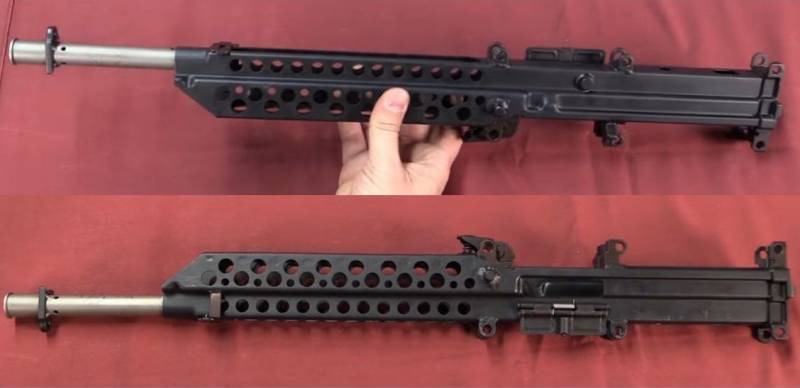
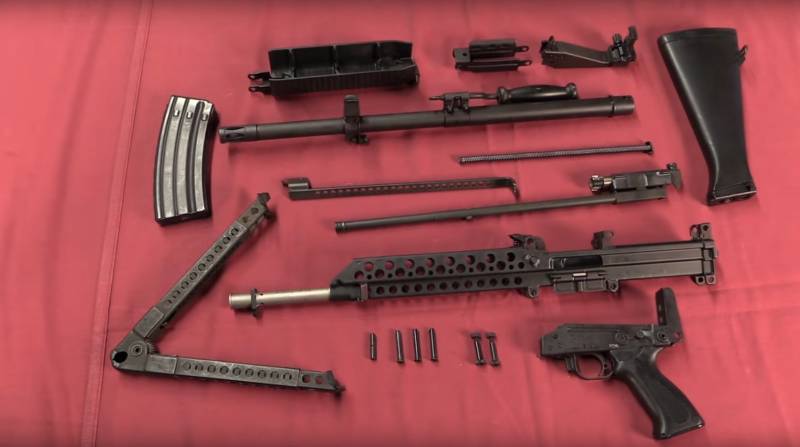
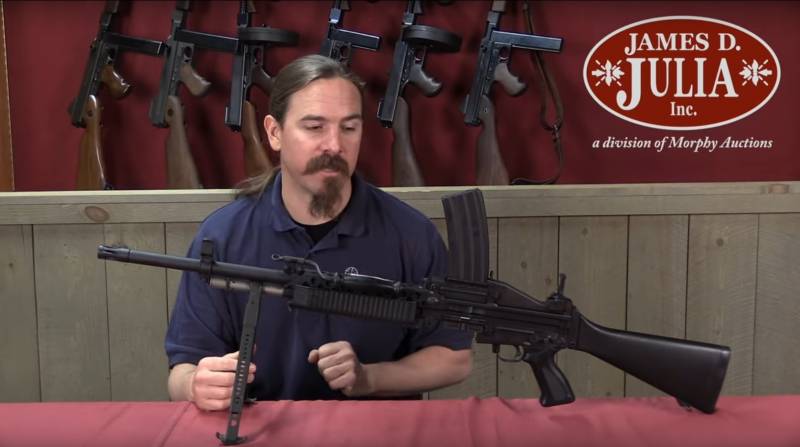
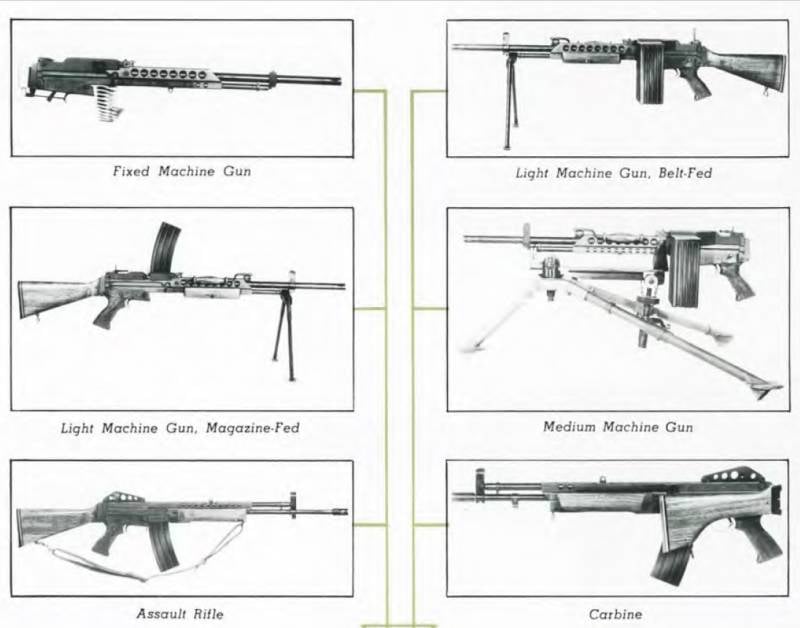
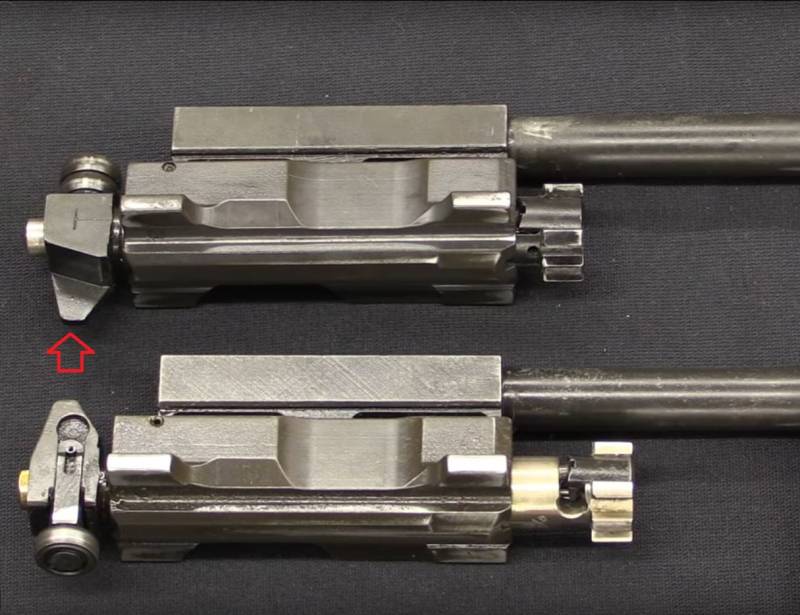
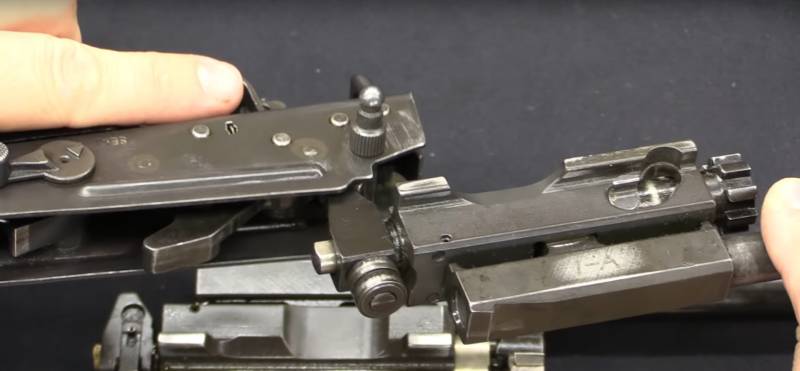
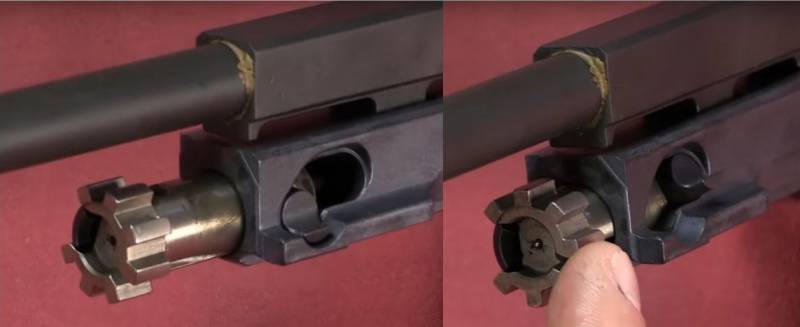
Information